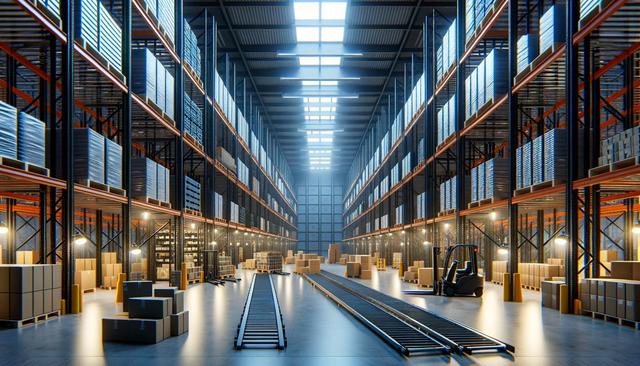Understanding the Value of Warehousing and Storage
As businesses grow and inventory needs expand, efficient warehousing and storage solutions become essential. Whether you’re managing a retail operation, a manufacturing facility, or a logistics company, having access to reliable storage space can significantly impact productivity and cost management. Modern warehousing offers more than just extra square footage—it integrates smart systems and layouts to optimize every inch of space. By investing in well-planned storage infrastructure, businesses can handle seasonal inventory fluctuations, reduce clutter in operational areas, and ensure quick access to stock when needed.
In addition to operational benefits, well-maintained warehousing space also supports compliance with safety and regulatory standards. Organized storage reduces the risk of accidents, minimizes product damage, and creates a more efficient working environment. For many companies, renting or outsourcing warehousing services is a strategic move that allows them to scale without the overhead of building and maintaining their own facilities.
Maximizing Space with Storage Rack Systems
One of the pivotal components of a functional warehouse is the use of storage rack systems. These systems are designed to maximize vertical space while allowing for easy access and inventory rotation. Depending on the type of goods being stored, businesses can choose from a variety of racking systems including:
- Pallet racking: Ideal for heavy and bulky items.
- Cantilever racking: Suited for long materials like lumber or piping.
- Push-back racking: Efficient for last-in, first-out inventory systems.
- Selective racking: Offers direct access to each pallet, improving pick times.
Choosing the right rack system depends on factors such as product weight, turnover rate, and available floor space. By optimizing these systems, companies can increase storage density, reduce retrieval time, and improve inventory control. Furthermore, modular racking designs provide the flexibility to adapt configurations as business needs change over time.
Integrated Warehousing Services for Efficiency
Outsourcing warehousing services has become a popular choice for businesses aiming to streamline operations and reduce capital expenditures. These services often include not just storage, but also inventory management, order fulfillment, and transport coordination. By partnering with a dedicated service provider, businesses gain access to advanced technology and skilled labor without the need to invest in infrastructure or staffing.
Key advantages of using third-party warehousing providers include:
- Scalability to meet changing demand
- Improved shipping and order accuracy
- Reduced overhead and staffing costs
- Access to real-time inventory tracking
These integrated services are especially beneficial for e-commerce businesses and companies with national or global distribution needs. They allow for faster delivery times, reduced shipping errors, and improved customer satisfaction overall.
Designing Warehousing Space for Flexibility
Creating adaptable warehousing space is crucial for businesses that experience cyclical demand or frequent changes in product lines. A flexible layout ensures that the warehouse can be reconfigured quickly to accommodate different storage needs, whether it’s expanding a receiving area during peak seasons or reorganizing for a new product launch. This flexibility is often achieved through modular construction, multi-purpose zones, and mobile storage units.
Design considerations for adaptable warehousing include:
- Clear traffic paths for forklifts and personnel
- Strategically placed loading docks and staging areas
- Dedicated zones for short-term and long-term storage
- Integration of automation tools for picking and sorting
By planning for change, businesses can avoid costly downtime and maintain high levels of efficiency, regardless of market fluctuations or internal shifts in strategy.
Strategic Planning for Long-Term Storage Solutions
To fully leverage the advantages of warehousing and storage, strategic planning is necessary. This involves evaluating current and future storage needs, understanding product lifecycle requirements, and analyzing cost implications. Businesses should also consider location when selecting storage facilities—proximity to suppliers, customers, or major transport routes can significantly influence delivery speed and fuel costs.
Long-term storage planning also includes considerations like:
- Climate control for sensitive products
- Security measures to protect inventory
- Insurance and liability coverage
- Technology integration for inventory tracking
By aligning storage strategies with business goals, companies can ensure they are prepared to scale efficiently and respond to market demands. This forward-thinking approach not only reduces risk but also enhances overall operational resilience.
Conclusion: Finding the Right Fit for Your Storage Needs
Choosing the right warehouse storage solution is a critical decision for any business looking to optimize space, cut costs, and improve logistics. Whether implementing advanced storage rack systems, outsourcing to specialized warehousing services, or designing flexible warehousing space, the key lies in aligning these elements with your specific operational requirements. By investing in effective warehousing and storage strategies, companies can enhance efficiency, support growth, and remain competitive in today’s fast-paced market environment.




Leave a Reply